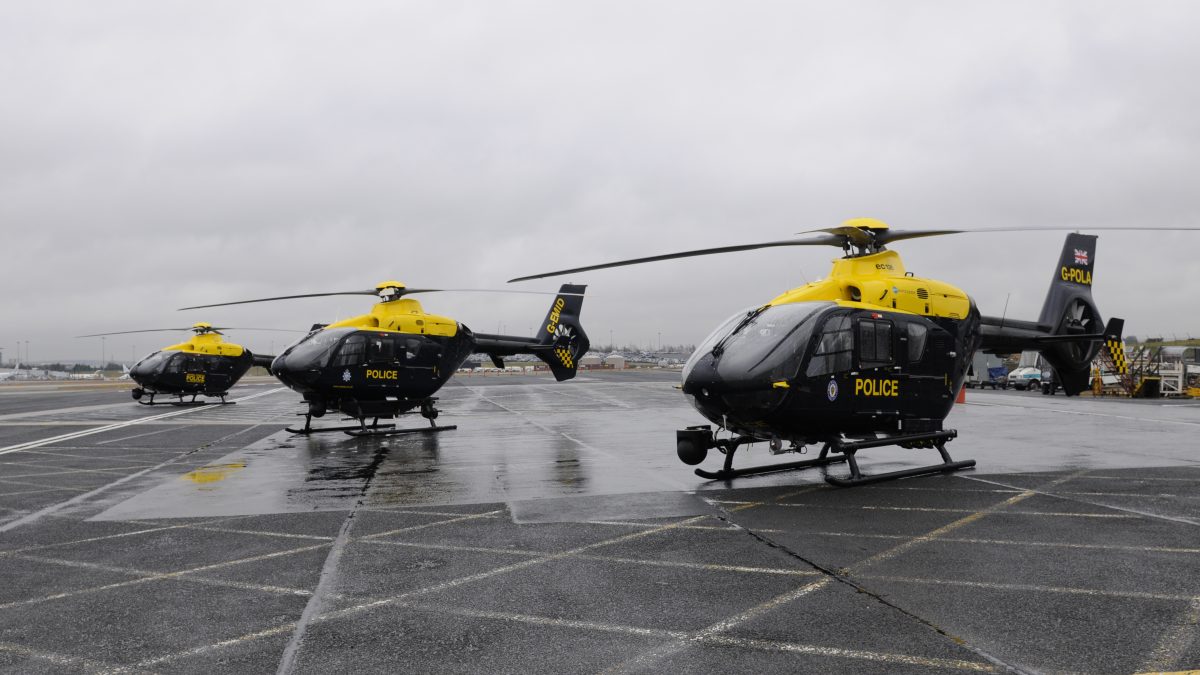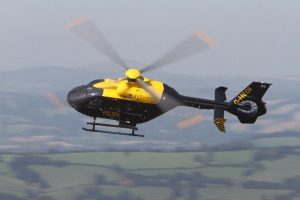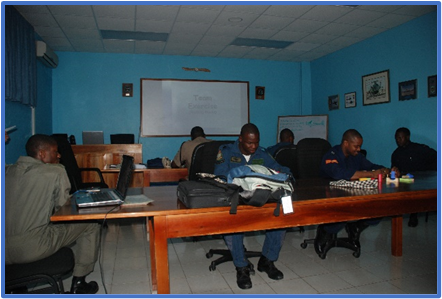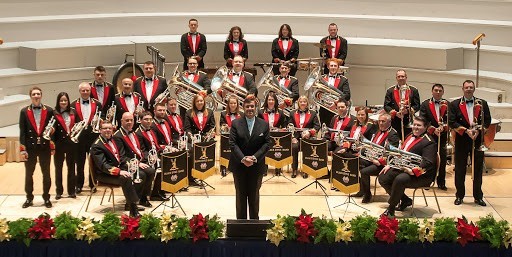
Psychometrics Within Aviation
In 2009, along with three other police air support colleagues, I became one of the first four police officers in the United Kingdom to be trained to deliver crew resource management (CRM) training to our peers within the ‘blue light’ emergency services sector. We were all successfully granted Civil Aviation Authority CRM(Ground) authority. As I had always been fascinated by people, more importantly how they interacted to form cohesive teams and how they subsequently developed that vital psychological safety and synergy, CRM training was a natural extension and development of my training qualifications. Yes, UK police air support possessed some of the most technically advanced aircraft in the world, delivering high powered cameras to where they were best needed but there was always a caveat!
If you do not have the right people, operating in synergy within that £5m aircraft you considerably reduce its effectiveness.
You may well employ the most technologically minded tactical flight officer or the most capable pilot but if they cannot work together you lose the fundamental ability to ‘fight’ with the aircraft. That potential lack of team cohesion naturally then translates to the results achieved and this ultimately commutes to a reduced service for the communities and colleagues that they aim to serve. In essence, performance is seriously compromised. For this reason, it is vital that investment (time) in CRM becomes the focal point for delivering a safe and healthy team ethos. And it all starts with the individual and self-awareness.
I dare say that many of you have been subjected to some form of psychometrics during your working life. There are many processes and companies available out there that seek to inform you of who you are and how you can become a better version of yourself. I would also hazard a guess that you have forgotten the majority of the information passed to you with regards to your personality and what were your strong or weak points. The majority of these processes simply play on your bias confirmation and don’t actually tell you anything more than you already know. In effect you stand in front of the mirror and see the very same person that stands in front of you there day after day. It may well have helped in your personal development or conversely, you may have been skeptical as to the results, and may still may be.
Over the years I have experienced several attempts for the algorithms of these psychometrics to decide who I was and I generally spent the customary 15 minutes answering the mandatory 20 questions, along with a sigh and an ‘oh, go on then!’ attitude. Granted, some were definitely better than others with a key factor being the time and quality of the debrief, which is vital if true personal insight is to achieved. I can honestly say that the Innate-Talent Discovery assessment was the only psychometric assessment where I felt that I had stood in front of that mirror and the smoke had been completely removed, allowing me to see my true self! Not just who I thought I was. It was if the insight, that I had provided via the assessment, had stripped me back to my inner core, in the process removing each layer of clothing, unveiling not what I thought or would have liked to be there but what was actually there, warts and all!

In the January 2021 edition of the Police Aviation News, I wrote about my experiences during my time with the National Police Air Service and briefly outlined how psychometrics had helped me greatly to put into context my experiences of bullying and exposure to a toxic culture. I now wish to elaborate on the psychometrics that helped me move on, heal and forgive as a result of this particular assessment experience. In fact, and this may sound strange, the psychometrics didn’t actually attempt to tell me who I was, the psychometrics allowed me to tell myself who I was. My subconscious responses provided me with that insight and they cannot lie. There was just no place to hide. This particular psychometric assessment didn’t even use algorithms but approached the individual assessment in a holistic manner.
What do I mean by a holistic approach? Well, the assessment actually started even before the official ‘sit-down’ assessment. My CV, my experiences, my work history were all considered prior to formulating my eventual personal debrief. Due to my signing of a non-disclosure agreement, I cannot divulge the detailed nature of the 2-hour assessment but tasks looked at my eyesight, my psychomotor skills, my ability to solve and visualise problems, speed of reaction, concentration levels, ability to deal with stressful situations and also my personality. It was extremely thorough but, and here’s the question; why wouldn’t it be? If I was to gain a true insight into who I actually was, what made me tick and how I reacted to certain situations a 15-minute tick the box ‘quick hit’ assessment would simply not provide those in-depth answers. This was an investment in me, my family, my future and any future organisation that I worked for.
The assessment tests were devised and structured in a way to discover my potential innate talent complexity. Was I a linear or non-linear thinker? A linear thinker sees the world through a lens where set patterns appeal, where one step in the process leads to another in order to achieve success. Every step requiring the previous one to have been taken before the next one can be taken prior to the goal being achieved. Those goals are also achieved having previously experienced those defined steps and because they may have worked previously, they are stringently followed time and time again. The pattern is built.
With regards to non-linear thinkers, they visualise that process and look for new ways to adapt or alter the path to success, seeing and proactively reacting to variances that may, or may not, occur on this particular journey, due to the changes in the environment or colleagues that inevitably occur along that path.
If I equate this thinking to police aviation let’s look at a newly recruited pilot. They have the required number of hours flying twin engine helicopters, they have the correct type rating, the necessary pilot in command hours and have passed the organisation’s flight test and interview but have they the necessary complexity potential? Those previous flying hours may have been acquired whilst flying over the North Sea to the rigs. That is a totally different type of flying to that of the single pilot, high demand, crew orientated and flexible flying that police aviation demands. Don’t get me wrong, over the years I have seen many pilots from all types of background both succeed and faulter when faced with the demands of police flying but how do we ensure that the pilot (and tactical flight officers!) from any previous background have the right innate talent required to perform in some potentially highly demanding and stressful situations, thereby not encroaching on the success of the mission or reducing the safe operation of the task?
The Innate-Talent Discovery assessment would provide that vitally important insight and as a result would increase psychological safety within any given team. It would also save hundreds of thousands of pounds as it would prevent discovering, at a later date, that the pilot or TFO was simply not suited to the demands of police flying. It would also prevent poorly recruited staff then being faced with yet another potential career change, loss of confidence and experiencing the huge disappointment of not succeeding in a career that they desperately aspired to. It would therefore be a far better way of dealing with an individual’s expectations and hopes. We also have to remember that these people have families, financial pressures and may well have initially moved home to take up the position. At the moment what tends to happen, if a pilot or TFO does not make the required grade, is that they are then required to experience additional training, given actions plans and increased time to develop. They are after all an expensive asset. This can all be averted using the psychometrics and is a cost effective and emotionally fair means of dealing with expectation.
If you calculate the turnover cost of staff, particularly pilots, it is astonishing how much money and time is wasted as well as the reduced productivity experienced by the organisation. How much better would it be if an organisation could avoid this waste of time, money and a reduced capacity to function.
You may have remembered that my January article focused on the bullying and toxic environment that prevailed within NPAS, along with the negative and destructive consequences that I experienced. This toxicity could well have been avoided if we had simply aligned a person’s innate talent with the role that they either held or aspired to. This is at all levels within all departments of an organisation.
The added benefit of experiencing the assessment and the depth of self-awareness was the ability to put things into context. This in turn allowed me to understand, heal and forgive the bullying and toxic culture that I had been exposed to within NPAS. I only wish that I had known myself better before being confronted by these difficult situations that arose and engulfed me and my family emotionally and physically.
So how did the assessment provide me with that all important context? The assessment stated that I had a creative nature and loved solving problems by visualizing potential solutions. That creativity, far from being an asset can become my Achilles heel and this can lead to negative situations. Yes, I saw a path around the issue of rearranging the NPAS base managers shifts whilst viewing the reasoning and evidence behind its inception as being unjust and ill-founded. The suggested changes would have created more issues that it would have solved with a high percentage of managers having to leave the organisation therefore incurring a high cost of recruitment, with a huge loss of experience. How long would it have taken NPAS to recruit and replace those members of staff and how long would it have taken to reacquire that amount of experience? I am also passionate about injustice and how people are treated which simply added fuel to the fire. That creativity and passion led me to come into conflict with a senior manager who was a linear thinker and, challenged by my approach and non-linear thinking, reverted to bullying. If I had realised my own innate talent and taken into consideration their respective innate talent then I would certainly not have approached the situation as I did and I would have protected myself from the subsequent harm; starting with a two hour ‘non-disciplinary and welfare meeting’! That context also allowed me to look at how that leader had come to be in such a position which was not aligned to his innate talent. It was therefore not a personal failure on his part but an organisational failure.

This innovative use of psychometrics within aviation is not simply restricted to recruitment as it has a far broader context within aviation and more critically within crew resource management. Some of those other benefits are outlined below:
Staff and Organisational Wellbeing:
There is a psychometric maintenance package available which is a stripped-down assessment and would allow for the monitoring of staff, ensuring they are not in burn out or experiencing undue stress. It would remove the requirement to launch those unnecessary time-consuming annual staff surveys that rarely find the root causes of organisational discord and lack of employee engagement. In fact, it is far more interesting to look at who and how many staff do not answer such surveys! Those staff that do spend the time to answer them, generally under duress or to provide a personal rant, are full of bias and do not allow for constructive feedback. How many subsequent surveys feedback reports state that everything in the organisation is working well or we will reactively implement this initiative or that initiative in order to engage staff? Why not be proactive and understand your staff using 100% engagement and their sub conscious responses as to how they are enjoying their current situation and role?
At this point It should be noted that stress can emanate from home circumstances and not solely from work. This monitoring process allows the organisation to listen to and witness the very ‘heartbeat’ of the organisation and to see issues within individuals and teams develop, providing early intervention before they become major problems. That monitoring also provides supervisors with leverage when speaking with staff during personal or team discussions and that all important tactful insight in to the true root cause of any issues. It provides that window into the organisation ensuring that wellbeing is promoted, understood and enhanced.
Promotion, change of role or career progression
It is generally agreed that not everyone is suitable for promotion; just because you are a good pilot doesn’t automatically mean that they will be a capable senior or chief pilot. The assessment would help provide that true insight into who the most suitable person was for any given role. A no name no pack-drill process would remove bias in all its guises and would present the organisation with the best talent for that particular role. This then removes favouritism, nepotism and prevents over promotion of personnel simply because they were ‘promised’ a role or were ‘next in line’ because of seniority. That ability to prevent overpromotion then counteracts Peter Principle which in turn forces good people into respective incompetence and the exhibited negative behaviours which are symptomatic of that role change. It also prevents the negative and destructive behaviour of bullying as staff will no longer fall into incompetence and burn out.
Alternatively, organisations can promote or employ staff with a set probationary period where the maintenance package would then be used to monitor their performance in the new role and environment, ensuring that the person does not fall into the trap of burn out and Dunning-Kruger. Once again, the person’s subconscious responses will not lie and these assessment results can then be used during any one-to-one discussion ensuring that the person’s external, and often biased view of their own abilities and performance, can be honestly and openly analysed against the evidence put before them.
The psychometrics can also be used to help staff seek out the right opportunities within the organisation where their innate talent can be best utilised. Finding that suitable role is vital if employees are to find fulfillment within their chosen career. This then has a hugely positive effect on the persons home/ social life as both career and home/ social life are intrinsically connected. If you are happy and fulfilled at work you stand a far greater chance of having a happy and fulfilled home life and vice versa.
If required the psychometrics can be used to develop individuals and teams through bespoke coaching and mentoring, focusing on areas that require more focus than others. That development can then be regularly monitored using the maintenance assessment. What we have to remember is that a change of position or environment will have an effect on the individual or team as it is all connected. This was experienced when the Boreham base moved to Lippitts Hill in 2018 with internal issues being created due to team, personal and organisational issues. This important analysis would have greatly helped the staff, the senior leadership team and supervisors to overcome those fundamental issues, putting in place suitable intervention strategies to alleviate the problems experienced on an individual and team basis. Those issues unfortunately manifested themselves in behavioural symptoms between members of both bases and also within members of the Boreham base as longstanding issues were carried forward from the previous merging of the Wattisham and Boreham base some months earlier. Having that insight via psychometric analysis would have greatly accelerated that unit’s development and psychological safety.
We can also relate this very issue to the base move endured by staff at Lippitts Hill when they moved to North Weald. That insight into the individual complexities of change would have prevented so many underlying issues which then compounds itself in negative behaviours and ultimately increased risk to flight safety and reduced performance.
TFO and Pilot Training
Once staff have been assessed training can be delivered not blindly on a ‘one course fits all’ basis, but on a bespoke individual basis. For example, a pilot has diminished concentration levels and that is evidenced by repeated errors when completing paperwork, the assessment will highlight this and also allow for a root cause analysis as to why it is happening. That macro insight may then translate to an aircraft maintenance issue being missed or deferred along with a breach of CAA rules! If a TFO has limited peripheral vision this can be fed back to trainers so the trainers and student can understand certain instances when suspects are missed on the camera system. That potential frustration on the part of the trainer and student can be alleviated with preventative actions as both the student and trainer know what the root cause of the problem is and deal with it constructively rather than it becoming personalized, which tends to happen at the moment. How much more productive would that expensive training be if it had been developed and produced to cater for the needs of that individual whilst also being understood by the trainer? This then benefits the individual, the team and also the organisation with less errors and a higher success rate. That translates to increased community confidence in the police. It could also mean the difference between a vulnerable missing person being successfully located or not.
Following the German Wings tragedy in March 2015 steps were taken to ensure that pilots were psychologically assessed in an attempt to prevent such events happening ever again. Unfortunately, that assessment is based on a bi-annual psychological assessment. Changes in circumstances and behaviour can occur in days and weeks and the opportunity to pick up these nuances will be missed if a 2-year strategy is employed. Does this policy cover emergency aviation and smaller operations? It could be argued that police and air ambulance experience an equal, if not greater, pressure than airline pilots due to shift work and single pilot operations in a potential hostile environment. This assessment would provide that early intervention should any staff, not solely pilots, be suffering from depression caused by any number of root cause effects.
We have numerous aircraft monitoring systems in place to measure the health of the aircraft, ensuring it is properly maintained prior to any major corrective action being necessary so why do we not have the very same systems for the most important element of safe flying, the pilot and crew?
Psychological Safety/ Inclusivity/ Diversity
With increased self-awareness comes the added benefit of psychological safety, which in turn produces a higher level of inclusiveness and diversity.
How can that happen?
Quite simply, by using talent as the solid platform, the foundation, on which to base staff management you organically develop psychological safety. The team become self-aware, conscious of the rest of the team, being better informed to understand the actions and behaviours of their colleagues. When issues do arise, they do not then become individualised as the root cause of the problem becomes the focal point to solve, as a team. The team then either celebrates as a team or learns from the experience with not finger pointing or blame culture being created as a result.
Some years ago, NPAS attempted to implement the CAAs Just Culture but it failed. Why? because, although it was a noble cause, it was not implemented on a firm footing where trust prevailed no matter how well meaning the submitted error report was. How much safer would the operation be with increased staff self-awareness and psychological safety?
Using the psychometrics to build those teams, including the senior leadership team, a just culture would naturally flourish.
The organisation would also see a reduction in negative issues between colleagues and the requirement for mediation and professional standards. Why? Well, because that greater individual understanding provides people with the ability to put issues in context and, as above, the root cause of the problem is focused upon, rather than it becoming individualised. In essence, people are more willing to walk around the table to see and understand what the other person is looking at from their respected perspective.
All ranks/ roles/ engineers
As previously mentioned, this system needs to be adopted across the entire organisation as that self-awareness and understanding needs to be woven into the very fabric of its operation. Being able to understand an individual and put the environment that they inhabit into context is vital. From the base cleaner to the Chief Operating Officer if that self-awareness is achieved then synergy will be achieved with solutions being found to problems from people now willing and confident to contribute to the success of the organisation. They will no longer fear ridicule or a lack of respect when contributing their ideas and opinions and the organisation benefits from the creativity and innovation from both linear and non-linear participants.
CRM Training


Reflecting on my days travelling the length and breadth of the country (and further afield!) conducting the mandatory annual CRM training how much better would it have been received if I had known the specific issues staff at the base were facing? Those issues could have then been addressed during the training. Using the maintenance assessment prior to any annual training would allow the trainer to analyse where they should focus their input, therefore providing a far more impactful and productive training experience rather than just an annual ‘tick the box’ exercise. The training would then become far more interactive if facilitated correctly which, once again, benefits not just the individual but the organisation and the wider community.
Those topics of leadership, communication, teamwork and situational awareness would be further enhanced and accelerated as a result of that increased awareness and insight.
So, that is a brief explanation of the enlightening experience that I went through following my Innate-Talent Discovery assessment following my time with NPAS. I am proud to say that I did come out ‘the other side’ and I would like to think a better version of myself. I was certainly a more confident and self-aware human being. My only wish would have been that I not had to go through the dark days that I experienced but that said I am now in a better position to be able to understand the actions of myself and others, thereby preventing myself from falling into the same damaging traps ever again.
If I could wrap up this article in two sentences I would simply say,
‘By using the power of self-awareness and psychometrics we can assist people become the best version of themselves. Organisations can then develop and increase their performance through their people, not at the expense of their people’
If you would like to explore the use of this unique psychometrics tool to enhance your business please feel free to contact any of the team who will be happy to answer your questions on this innovative concept:
David Howell at david.howell@ableandrush.com or phone on 07980 718872.
Innate-Talent Discovery at info@i-talent.sg
Fraser Gault Consulting at info@gaultconsulting.com
Categories
- Anti Bullying (2)
- Aviation (2)
- Business (2)
- Motivation (1)
- Self Awareness (5)
- The Book! (1)



